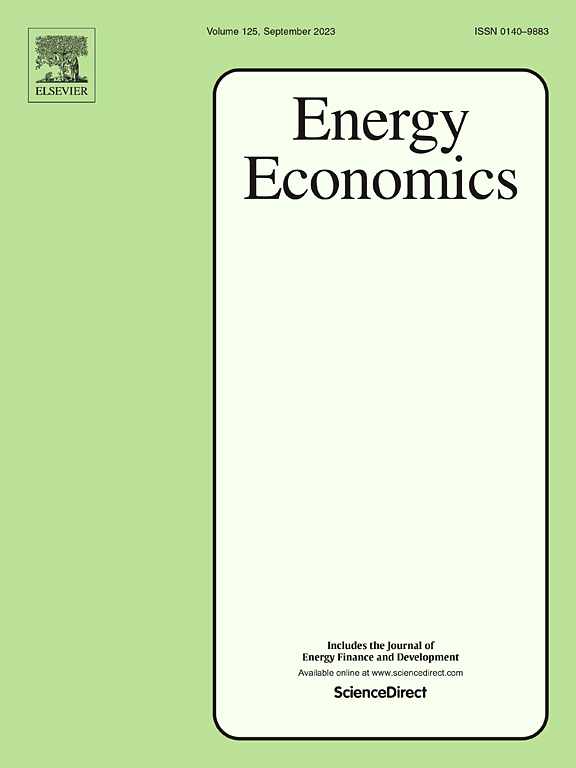Spatial distribution and drivers of renewable energies in European regions
IF 13.6
2区 经济学
Q1 ECONOMICS
引用次数: 0
Abstract
The energy transition is a complex process that varies significantly among European regions. This research uses spatial econometric panel models to investigate the evolution of wind and photovoltaic (PV) energy in Europe throughout the 21st century by identifying the main drivers (socioeconomic, institutional, geographic and demographic factors) of renewable energy capacity in European regions. The study reveals high heterogeneity in the development of these renewable energy sources. GDP per capita shows a positive relationship with both technologies, while the opposite is found for population density. While natural resource factors considered here do not seem to considerable impact the location of wind and PV farms, the pattern of territorial technology diffusion through spatial spillovers stand out as a determining factor in the wind and photovoltaic energy place-based evolutionary processes.
求助全文
约1分钟内获得全文
求助全文
来源期刊

Energy Economics
ECONOMICS-
CiteScore
18.60
自引率
12.50%
发文量
524
期刊介绍:
Energy Economics is a field journal that focuses on energy economics and energy finance. It covers various themes including the exploitation, conversion, and use of energy, markets for energy commodities and derivatives, regulation and taxation, forecasting, environment and climate, international trade, development, and monetary policy. The journal welcomes contributions that utilize diverse methods such as experiments, surveys, econometrics, decomposition, simulation models, equilibrium models, optimization models, and analytical models. It publishes a combination of papers employing different methods to explore a wide range of topics. The journal's replication policy encourages the submission of replication studies, wherein researchers reproduce and extend the key results of original studies while explaining any differences. Energy Economics is indexed and abstracted in several databases including Environmental Abstracts, Fuel and Energy Abstracts, Social Sciences Citation Index, GEOBASE, Social & Behavioral Sciences, Journal of Economic Literature, INSPEC, and more.
 求助内容:
求助内容: 应助结果提醒方式:
应助结果提醒方式:


